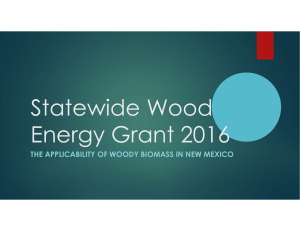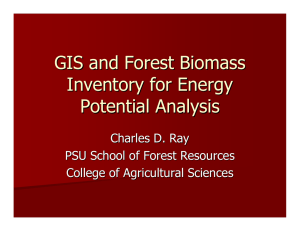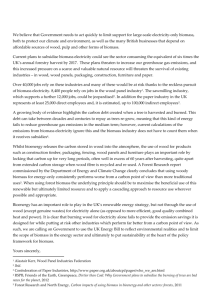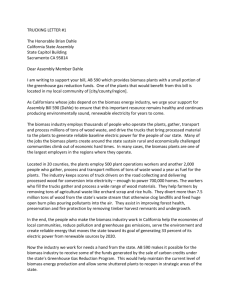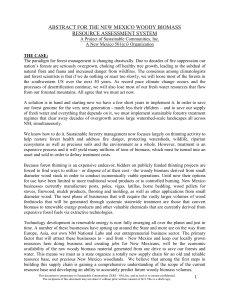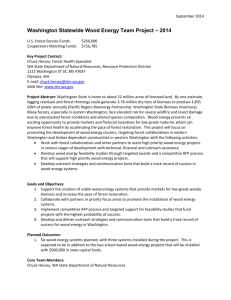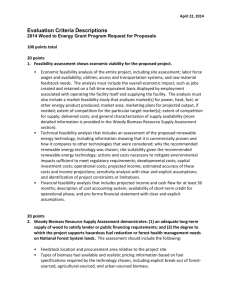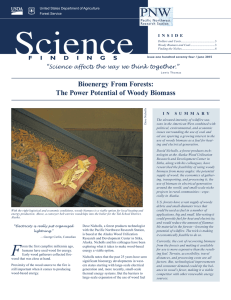Introduction to Wood Biomass Model
advertisement
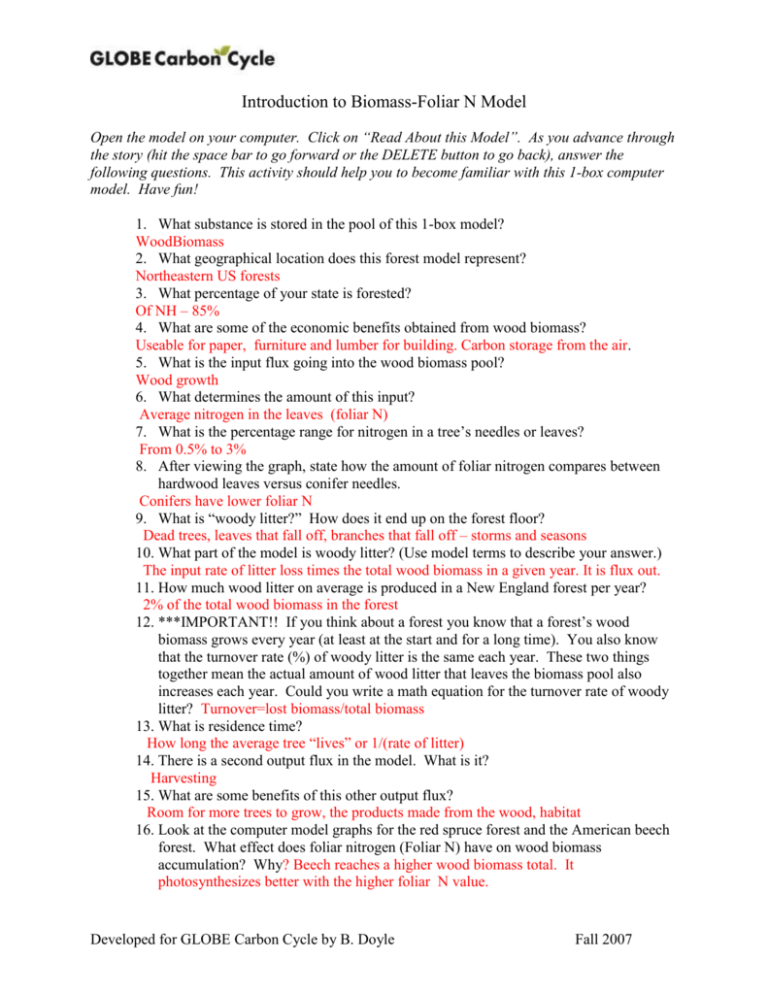
Introduction to Biomass-Foliar N Model Open the model on your computer. Click on “Read About this Model”. As you advance through the story (hit the space bar to go forward or the DELETE button to go back), answer the following questions. This activity should help you to become familiar with this 1-box computer model. Have fun! 1. What substance is stored in the pool of this 1-box model? WoodBiomass 2. What geographical location does this forest model represent? Northeastern US forests 3. What percentage of your state is forested? Of NH – 85% 4. What are some of the economic benefits obtained from wood biomass? Useable for paper, furniture and lumber for building. Carbon storage from the air. 5. What is the input flux going into the wood biomass pool? Wood growth 6. What determines the amount of this input? Average nitrogen in the leaves (foliar N) 7. What is the percentage range for nitrogen in a tree’s needles or leaves? From 0.5% to 3% 8. After viewing the graph, state how the amount of foliar nitrogen compares between hardwood leaves versus conifer needles. Conifers have lower foliar N 9. What is “woody litter?” How does it end up on the forest floor? Dead trees, leaves that fall off, branches that fall off – storms and seasons 10. What part of the model is woody litter? (Use model terms to describe your answer.) The input rate of litter loss times the total wood biomass in a given year. It is flux out. 11. How much wood litter on average is produced in a New England forest per year? 2% of the total wood biomass in the forest 12. ***IMPORTANT!! If you think about a forest you know that a forest’s wood biomass grows every year (at least at the start and for a long time). You also know that the turnover rate (%) of woody litter is the same each year. These two things together mean the actual amount of wood litter that leaves the biomass pool also increases each year. Could you write a math equation for the turnover rate of woody litter? Turnover=lost biomass/total biomass 13. What is residence time? How long the average tree “lives” or 1/(rate of litter) 14. There is a second output flux in the model. What is it? Harvesting 15. What are some benefits of this other output flux? Room for more trees to grow, the products made from the wood, habitat 16. Look at the computer model graphs for the red spruce forest and the American beech forest. What effect does foliar nitrogen (Foliar N) have on wood biomass accumulation? Why? Beech reaches a higher wood biomass total. It photosynthesizes better with the higher foliar N value. Developed for GLOBE Carbon Cycle by B. Doyle Fall 2007 CHECK OUT THE 1-BOX MODEL. Click “Model Inputs” to begin. Developed for GLOBE Carbon Cycle by B. Doyle Fall 2007
